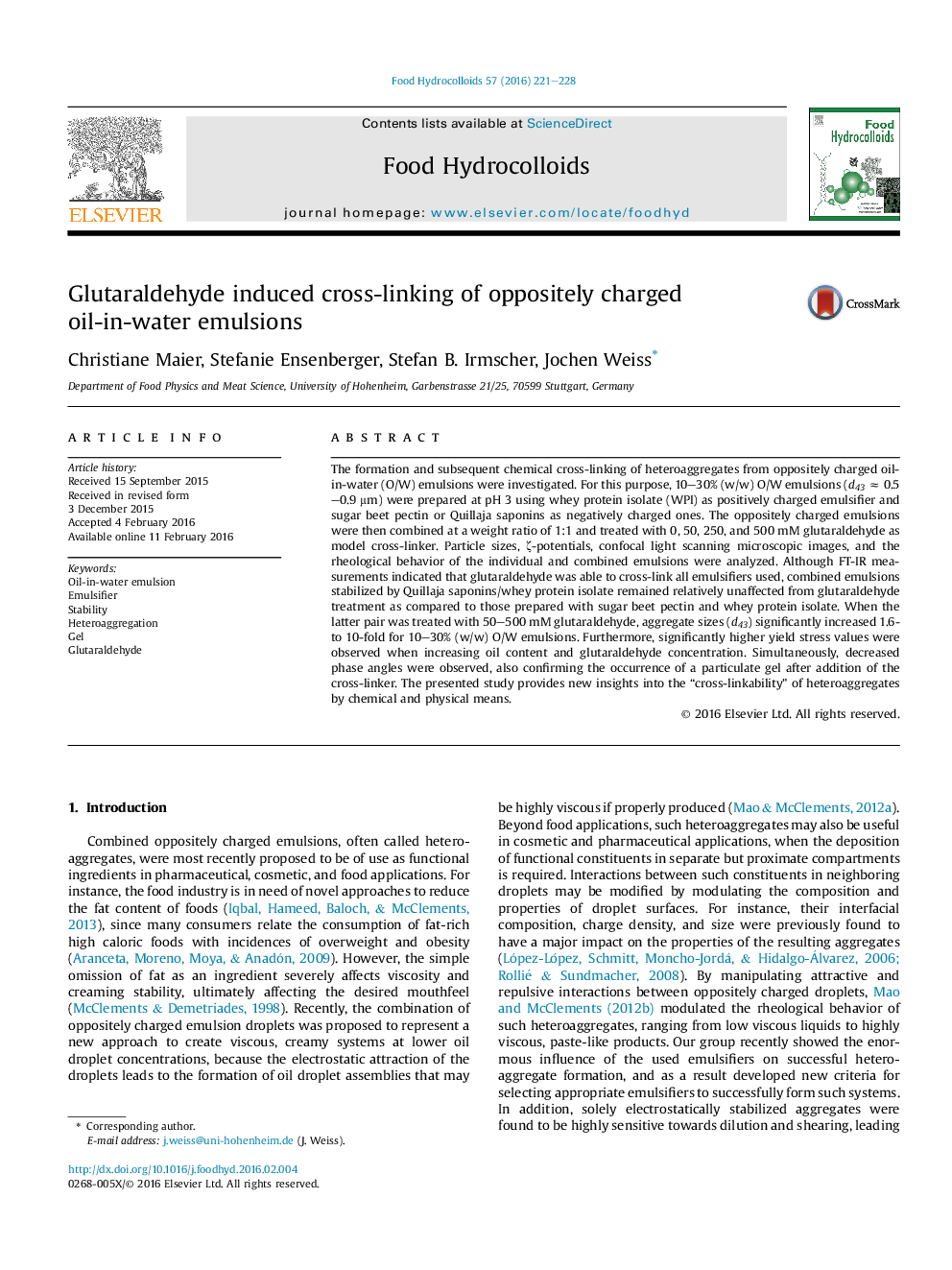| کد مقاله | کد نشریه | سال انتشار | مقاله انگلیسی | نسخه تمام متن |
|---|---|---|---|---|
| 604228 | 1454420 | 2016 | 8 صفحه PDF | دانلود رایگان |
• Glutaraldehyde was used as model crosslinker of heteroaggregates (HAs).
• Crosslinking was most successful with sugar beet pectin (SBP)-based HAs.
• Size of HAs increased up to 10-fold at highest level of glutaraldehyde (500 mM).
• Crosslinked SBP-based HAs formed gel-like structures.
• Crosslinking of Quillaja saponins-based heteroaggregates was poor.
The formation and subsequent chemical cross-linking of heteroaggregates from oppositely charged oil-in-water (O/W) emulsions were investigated. For this purpose, 10–30% (w/w) O/W emulsions (d43 ≈ 0.5–0.9 μm) were prepared at pH 3 using whey protein isolate (WPI) as positively charged emulsifier and sugar beet pectin or Quillaja saponins as negatively charged ones. The oppositely charged emulsions were then combined at a weight ratio of 1:1 and treated with 0, 50, 250, and 500 mM glutaraldehyde as model cross-linker. Particle sizes, ζ-potentials, confocal light scanning microscopic images, and the rheological behavior of the individual and combined emulsions were analyzed. Although FT-IR measurements indicated that glutaraldehyde was able to cross-link all emulsifiers used, combined emulsions stabilized by Quillaja saponins/whey protein isolate remained relatively unaffected from glutaraldehyde treatment as compared to those prepared with sugar beet pectin and whey protein isolate. When the latter pair was treated with 50–500 mM glutaraldehyde, aggregate sizes (d43) significantly increased 1.6- to 10-fold for 10–30% (w/w) O/W emulsions. Furthermore, significantly higher yield stress values were observed when increasing oil content and glutaraldehyde concentration. Simultaneously, decreased phase angles were observed, also confirming the occurrence of a particulate gel after addition of the cross-linker. The presented study provides new insights into the “cross-linkability” of heteroaggregates by chemical and physical means.
Figure optionsDownload as PowerPoint slide
Journal: Food Hydrocolloids - Volume 57, June 2016, Pages 221–228
